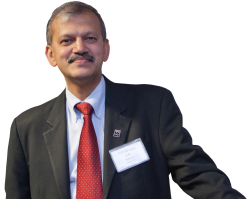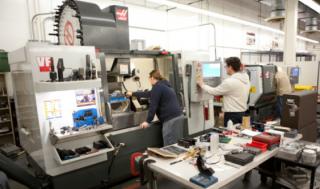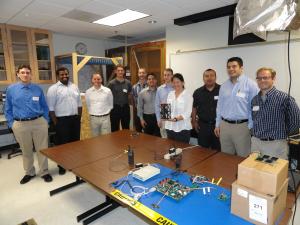Unmanned aerial vehicles—or drones, as they’re commonly known—have been making the news for several years now. But to the CECS seniors competing in the Unmanned Aerial Vehicle (UAV) team, they’re nothing new. Large numbers jump at the opportunity to design, build and fly one in the annual competition organized by the Association for Unmanned Vehicle Systems International (AUVSI); the UAV also serves as the senior design project for most.
“There’s lots of interest in this area,” says Tim Fox, professor of mechanical engineering, who advises the team. “This project is truly multidisciplinary, more than other projects. Students work with composites, auto-pilots, computer systems and imaging systems. It covers virtually every course in the mechanical engineering program.”
The most recent competition was held at the PAX River Naval Air Station in Eastern Maryland in June. CSUN’s entry, a 15-pound fixed-wing UAV called the Q-31 Foxtail in honor of Fox, was designed to autonomously take off; climb; demonstrate aerial waypoint navigation, in-flight route rescheduling and in-flight communication with a remote ground-based computer system; and conduct an aerial search for objects on the ground before returning home and landing autonomously. Q-31 Foxtail placed ninth overall out of the 36 schools registered for the competition and particularly excelled at three challenges. One was to establish an aerial Wi-Fi link between the vehicle’s ground control station and remote computer and interpret a message. Communication took place through the aircraft and required opening and extracting a file while the plane was still in the air. CSUN’s UAV was one of only six that were able to complete the task. It was also one of only nine aircraft that were able to autonomously take off, fly their mission and return after the mission was over. And the CSUN team placed third in the journal paper component.
For the coming year, the CSUN team is looking at developing a solar-powered version of the plane, which will significantly extend its operating time.
A message from the Dean
February 6, 2014Industry partnerships – HAAS
February 6, 2014Industry Partnerships – Jet Propulsion Laboratory
February 6, 2014
Leave a reply Cancel reply
-
Staff News
April 6, 2017 -
CECS leaves its mark on state capital
February 20, 2015 -
IAB Highlight – Chris Erickson
February 6, 2014




